Posted by June Underwood on April 18th, 2009
As Steve noted not long ago, perception — how, as well as what, we see and record — is prime territory for this group. Some weeks ago I wrote about painting in the desert, the Great Basin to be more precise, and, even more specifically, the Amargosa Plain just outside of Death Valley.
After having spent 6 weeks in the desert, perceiving and painting, mostly plein air, I am now back in Portland reading about desert perception in William L. Fox’s The Void, the Grid, and the Sign.
Fox has spent most of his life in and around a variety of deserts and back-of-nowhere lands, but in The Void he’s primarily concerned with the Great Basin, that large space between the Rockies and the Sierras, where water flows in, but never out, where there is no river coursing to the sea. He says that outside of Afghanistan, this area contains the most mountain ranges (316) in the world, but there are also 90 basins, places where what little water exists is captured between ranges and sinks or evaporates. The best known of these basins is perhaps Death Valley, although that lies outside Fox’s attention. The place I was painting, the Amargosa Plain, is also just outside his wide-ranging travels. However, much of what he says is apropos of the Amargosa and Death Valley.

Death Valley at the Beatty Cut-off, March, 2009
more… »
Posted by Steve Durbin on April 9th, 2009
One of our shticks at A&P (in a good way) has been our interest in learning about perception through findings in neuroscience, psychophysics, and related fields, as well as through introspective observation of our own seeing and art-making. Though this interest is not unique to A&P, it certainly isn’t very common, either. So I was delighted to come across two examples in a day of cognitive science finding mention in current art criticism at a rather higher level of visibility. It was especially nice that these references truly illuminated the discussion of the art viewer, in one case, and the artist, in the second.
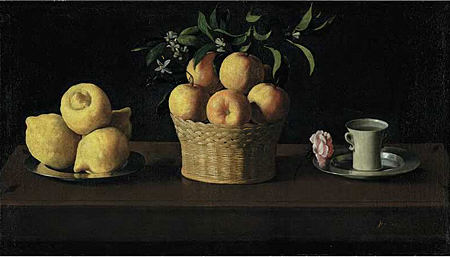
more… »
Posted by Steve Durbin on April 6th, 2009
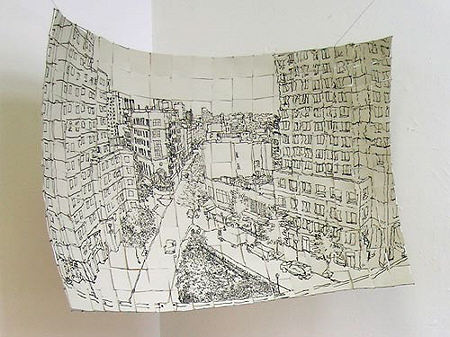
Lawrence Weschler has a delightful article in the Virginia Quarterly Review on the work of the young twins Trevor and Ryan Oakes. They are very original and persistent thinkers about how we see and the consequences for art. For example, though we’re seldom aware of it, our nose intrudes in almost half the visual field for each eye. This may be subliminally responsible for the claimed common appearance of roughly triangular shapes in the lower parts of pictures. (I haven’t attempted to confirm this, but it’s something I’ll be looking for in future, especially in abstract art; ask me again in six months.)
Most of the article is about a novel approach to rendering perspective, something that June particularly has discussed on A&P. Her prime example of Rackstraw Downes is another artist especially concerned with the wide peripheral vision, like the Oakes twins. The technique is essentially spherical projection combined with independent focusing of the artist’s two eyes, one on the scene being depicted and one on the paper being drawn on. The brain’s binocular vision, attempting to deal with this abnormal input, essentially overlaps the two views, so that the artist can “simply” trace with a pencil the scene that appears to be on the paper. I’ve tried this enough to see how it works, though it would clearly require practice and patience to keep it up. And it can only be achieved for a smallish angular range. So the brothers constructed a frame (see the article) which allows them to build up a panoramic image by building it up bit by bit.
more… »
Posted by June Underwood on March 21st, 2009
And now, at this point (day 30) in this particular residency in Beatty, Nevada, I am pondering a conundrum about my own landscape work. I haven’t quite enough distance to say for certain [pun recognized after it was made] but it seems to me that my interest in context and a sense of place interferes with my achieving a stylistic breakthrough, particularly with the set pieces that I love, like the mountains around Beatty.
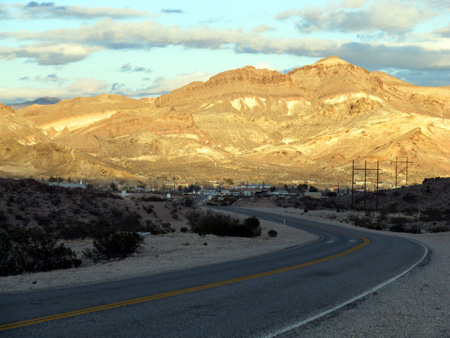
As my colleague and friend David T would say: if he walked into a gallery with my landscape paintings, he wouldn’t think of them as being “by June Underwood,”just as “nice” (not a compliment) landscape paintings.

more… »
Posted by June Underwood on March 6th, 2009
One of my preoccupations in painting inhabited space is to see how people perceive and decorate their surrounds. In cities, it seems to me, conformity sometimes rules — or perhaps there’s too much unconformity to make sense of a singular type of decorative decorum. Whatever the case, I find that peering at small towns and villages gives me a certain kind of data; both individually and collectively, people seem to want to dress up, decorate, make order of what lies around them. And in places with few people, it’s possible to suss out what that decorative impulse consists of.
A particular caution that I remind myself of — looking at what people do to dress up their trailer houses requires a disciplined mind. My goal is to neither romanticize nor to satirize. I allow myself no irony about individual choices, although lots of irony can abound when examining communal structures (like bridges and mine tailings). What I want is to see what’s there without indulging in judgment.
So what is the predominate beautification element of Beatty Nevada ( 220 miles south of Reno, 110 miles north of Las Vegas, population 1200, where the Amargosa River surfaces, just for a minute, before being swallowed by the Amargosa desert [a subset of the Mojave desert])?
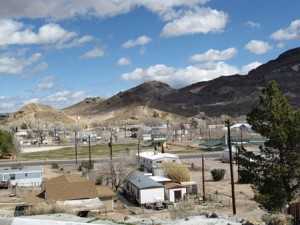
more… »
Posted by June Underwood on January 12th, 2009
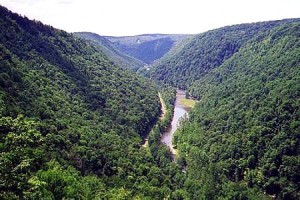
Pine Creek Gorge, photo from Wikipedia Commons, Commons licensing
I have been violating one of my basic principles. I have, gasp, been painting from photographs.
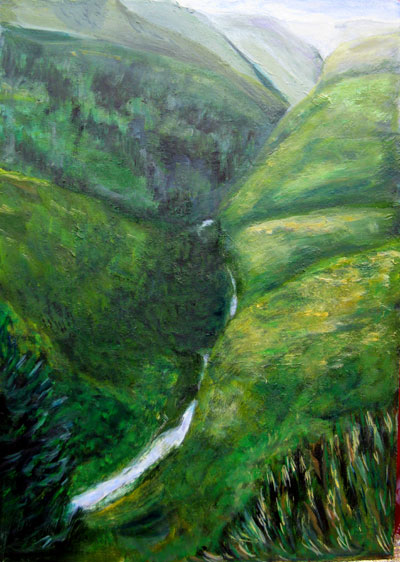
Pine Creek Gorge 2, 12 x 16″ Oil on board, 2008
more… »
Posted by June Underwood on December 26th, 2008
In a site called “Hold this Thought” Tom Livingston (Between Silence and Light) quotes architect Louis Kahn:
Architect Louis Kahn’s writings about daylight resonate with me. Here he talks about the nature of a room and its natural light:
“The room is not only the beginning of architecture: it is an extension of self. If you think about it, you realize that you don’t say the same thing in a small room that you say in a large room. If I were to speak in a great hall, I would have to pick one person who smiles at me in order to be able to speak at all.
…
Also marvelous in a room is the light that comes through the windows of that room and that belongs to the room. The sun does not realize how wonderful it is until after a room is made. A man’s creation, the making of a room, is nothing short of a miracle. Just think, that a man can claim a slice of the sun.”
http://www.holdthisthought.org/blog/index.cfm/2008/12/23/Between-Silence-and-Light-Tom-Livingston
I’m rather addicted to painting plein air, but the weather in western Oregon is more like eastern Kansas (ie snow, ice, slush, ugh!) right now. So I’ve been painting from my windows, which frame various neighborhood views and foliage. But the Kahn quote also gets me to thinking about the nature of rooms, which I haven’t painted.
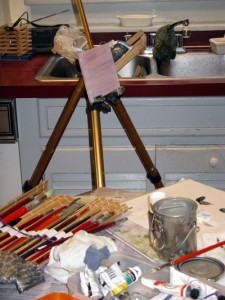
This is the unprepossessing set-up in my kitchen. The reason for painting in the kitchen, in spite of the traffic and the high window, is that the best tree in the vicinity faces the sink. It is a continual source of happiness to me — to be cleansing the cutlery while gazing at the ancient face of the huge cherry, with all its anciliary objects — squirrels, hanging plants, pots on the fence that leans against it.
more… »








